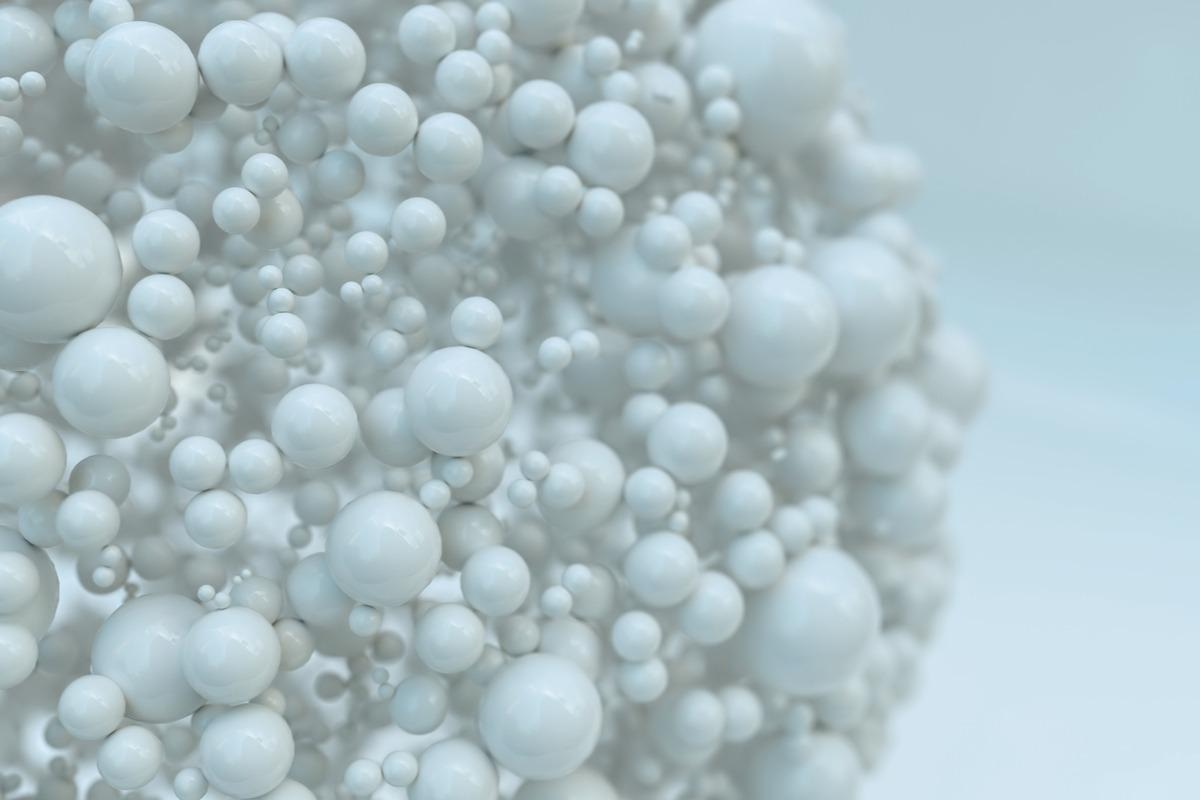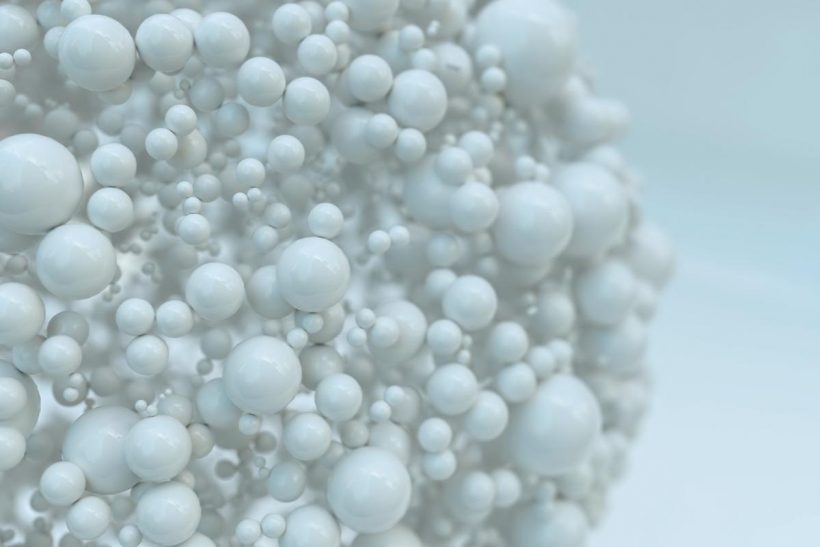In a recent study posted to the bioRxiv* preprint server, researchers assessed the efficiency of lipid nanoparticles against severe acute respiratory syndrome coronavirus 2 (SARS-CoV-2).

Messenger ribonucleic acid (mRNA) vaccines have played an instrumental role in curbing coronavirus disease 2019 (COVID-19) transmission. However, the varying side effects reported by vaccinees as well as the inefficiency of the vaccine against novel SARS-CoV-2 variants highlights the need for the development of new mRNA vaccines.
About the study
In the present study, researchers produced a COVID-19 vaccine named circular mRNA (cmRNA)-1130 against the SARS-CoV-2 Delta (B.1.617.2) variant.
Using the Michael addition reaction, the team synthesized a series of ionizable lipids with several ester bonds among the branched tails. Proton nuclear magnetic resonance (1H NMR) spectra were used to verify the structure of a lipid AX4 while its vaccination potential was estimated by formulating the lipid into lipid nanoparticles (LNPs). The team subsequently evaluated the delivery efficacy of the mRNA by using the firefly luciferase (Fluc) circular mRNA as a reporter in the LNP. The expression of the Fluc protein was later measured in mice after intramuscular (IM) administration.
Furthermore, the team explored the impact of the tail number of the lipidoids on mRNA expression by generating AX4-2 and AX4-3 having two and three X4, respectively. To understand the effect of ester bonds present in the lipidoid tails, the researchers replaced the amide bonds either a part of or all the ester bonds found in AX4. Subsequently, the in vivo biodistribution of mRNA-AX4-LNP was determined by using mRNA labeled with cyanine-5 (Cy5-mRNA).
The team also evaluated the efficacy and immunogenicity of the cmRNA-1130 vaccine that encoded the receptor-binding domain (RBD) on the SARS-CoV-2 spike glycoprotein of the Delta variant. This was achieved by administering the cmRNA-1130 vaccine in BALB/c mice followed by the collection of serum samples on days 14, 28, 42, 72, 102, and 132 along with the evaluation of RBD/spike specific antibodies, SARS-Cov-2 neutralizing antibodies (NAbs) and RBD specific T cell.
Results
The study results showed that the mice who received the Fluc mRNA-LNP had ionizable lipids having a tail comprising butyloctanoic acid (X4) displayed better delivery of mRNA and higher expression of protein as compared to lipids having hexyldecanoic acid (X6). The team also observed that the tertiary amines having two amine groups in the polar head enabled the introduction of a maximum of four branched tails. These tertiary amines also showed better delivery efficiency including AX4 with two- and AX6 with 0.2-fold higher expression of proteins than that observed in the commercially available Dlin-MC3-DMA lipid (MC3). Notably, mice treated with AX4 had a consistent expression of luciferase 24 hours after administration with the peak expression level observed at six hours after administration.
The team also found that the incorporation of ether, ester, hydroxyl, and tertiary amine into the lipid head resulted in lesser protein expression as compared to that in MC3. On the other hand, increasing the distance between the hydroxyl and the amine group improved delivery efficiency. Overall, the results showed that AX4 allowed the highest delivery efficiency.
The generation of AX4-2 and AX4-3 demonstrated that increasing the number of branched X4 resulted in the improvement of protein expression levels. This was indicated by the change in protein levels by three orders and three times in AX4 as compared to those in AX4-2 and AX4-3, respectively. The substantial decrease in the protein expression in AX4-2 was likely due to the increase in the number of secondary amines which could reduce the extent of mRNA release due to the formation of strong electrostatic interactions.
The team noted that the addition of amide bonds to the lipidoid tails reduced the intensity of luciferase expression, which was a result of reduced lipid degradation due to the presence of the amine bonds, leading to lesser mRNA release. Furthermore, higher protein expression was observed when the amide bonds farthest from the tertiary amine were replaced as compared to those adjacent to the tertiary amide, which was attributed to the degradation of ester bonds that produced carboxyl groups as well as shorter alkyl chains that improved mRNA release.
Cy5-mRNA administration showed significant Cy5 fluorescence in the liver, kidney, and gallbladder six hours post-injection, irrespective of IM or intravenous (IV) administration. Interestingly, remarkable luciferase fluorescence was detected in the whole liver which indicated that mRNA-AX4-LNP had substantial liver-targeted protein expression. On the other hand, the team noted that mRNA-AX4-LNP IV administration displayed significant protein expression in apolipoprotein E (ApoE) knockout mice.
The administration of the cmRNA-1130 vaccine showed a high level of NAbs post-second immunization with the vaccine. The team noted that the cmRNA-1130-vaccinated mice displayed high Delta pseudovirus neutralization which indicated that two doses of cmRNA-1130 induced a high level of SARS-CoV-2 NAbs against the Delta pseudovirus.
Overall, the study findings showed that the combination of AX4-LNP and circular mRNA provided safe and effective protection against SARS-CoV-2.
*Important notice
bioRxiv publishes preliminary scientific reports that are not peer-reviewed and, therefore, should not be regarded as conclusive, guide clinical practice/health-related behavior, or treated as established information.
- Ke Huang, Na Li, Yingwen Li, Jiafeng Zhu, Qianyi Fan, Jiali Yang, Yinjia Gao, Yuping Liu, Qiangbo Hou, Shufeng Gao, Ke Wei, Chao Deng, Chijian Zuo, Zhenhua Sun. (2022). Delivery of Circular mRNA via Degradable Lipid Nanoparticles against SARS-CoV-2 Delta Variant. bioRxiv. doi: https://doi.org/10.1101/2022.05.12.491597 https://www.biorxiv.org/content/10.1101/2022.05.12.491597v2
Posted in: Medical Science News | Medical Research News | Disease/Infection News
Tags: Antibodies, Apolipoprotein, Cell, Coronavirus, Coronavirus Disease COVID-19, covid-19, Efficacy, Fluorescence, Glycoprotein, Immunization, in vivo, Kidney, Knockout, Lipids, Liver, Luciferase, Nanoparticles, Protein, Protein Expression, Pseudovirus, Receptor, Respiratory, Ribonucleic Acid, SARS, SARS-CoV-2, Severe Acute Respiratory, Severe Acute Respiratory Syndrome, Syndrome, Vaccine

Written by
Bhavana Kunkalikar
Bhavana Kunkalikar is a medical writer based in Goa, India. Her academic background is in Pharmaceutical sciences and she holds a Bachelor's degree in Pharmacy. Her educational background allowed her to foster an interest in anatomical and physiological sciences. Her college project work based on ‘The manifestations and causes of sickle cell anemia’ formed the stepping stone to a life-long fascination with human pathophysiology.
Source: Read Full Article
